Do you ever think of feeding your cat something other than the traditional kibble and canned food?
It might surprise you to learn that cats can actually eat vegetables. Not only are veggies a tasty treat, but they also contain essential vitamins and minerals that help keep your cat healthy.
So what kind of vegetables can cats eat? Many cats enjoy raw or fried carrots, broccoli, sweet potatoes, green beans, zucchini, squash, celery, and bell peppers.
Some cats may even like leafy greens such as spinach or kale. However, before adding new foods to your cat’s diet, it’s best to consult with your veterinarian first.
Vegetables are a great source of essential nutrients for cats. They provide fiber which aids digestion; antioxidants that help prevent disease; vitamins A and C; and minerals like potassium which helps maintain electrolyte balance in the body.
Plus, veggies are low in fat and calories – making them an ideal snack choice for overweight cats who must control their waistlines. Incorporating vegetables into your cat’s diet is an easy way to add variety while still providing essential nutrients.
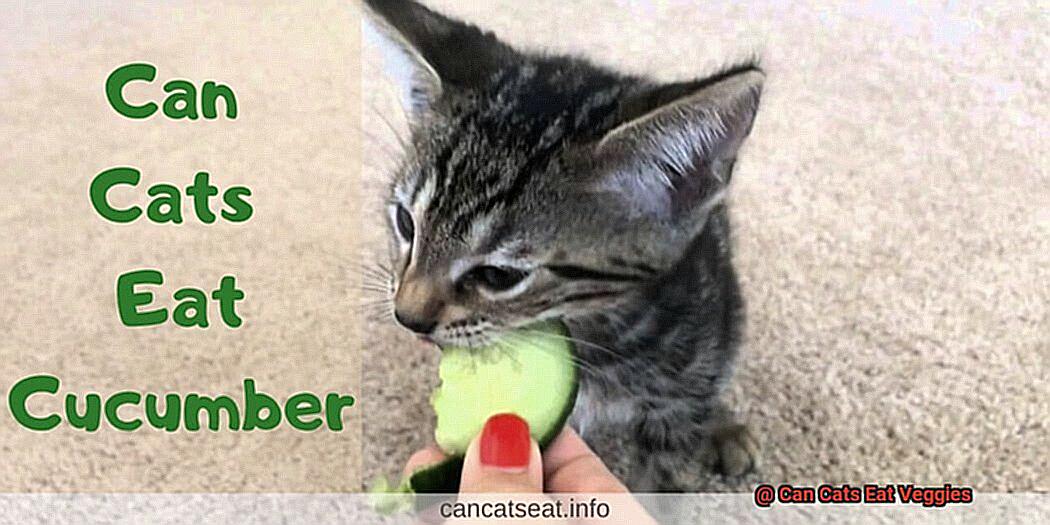
With proper planning and moderation, veggies can be a fun and nutritious addition to any kitty’s daily meal plan.
Benefits of Vegetables for Cats
Cats may not need vegetables in their diet, but certain varieties can provide a range of health benefits.
Carrots are a good source of beta-carotene, which is converted into vitamin A, an essential nutrient for feline eye health. Other healthy veggies for cats include green beans, peas, and broccoli.
However, onions, garlic, and mushrooms should be avoided entirely as they can be toxic to felines. Adding small amounts of select vegetables to a cat’s diet can help regulate their digestive system and prevent constipation and diarrhea.
Vegetables also contain essential vitamins and minerals that may not be present in a cat’s primary protein source. Plus, some veggies have anti-inflammatory properties that can reduce inflammation in a cat’s body.
Overall moderation is key when it comes to feeding vegetables to cats.
Types of Vegetables That Are Safe For Cats to Eat
Cats are obligate carnivores, meaning their bodies are designed to digest animal proteins rather than plant material.
However, certain vegetables can provide additional nutrients and health benefits when added to a cat’s diet in moderation. Leafy greens such as spinach, kale, and lettuce are excellent sources of vitamins, minerals, and fiber that can aid in digestion and even help prevent certain illnesses.
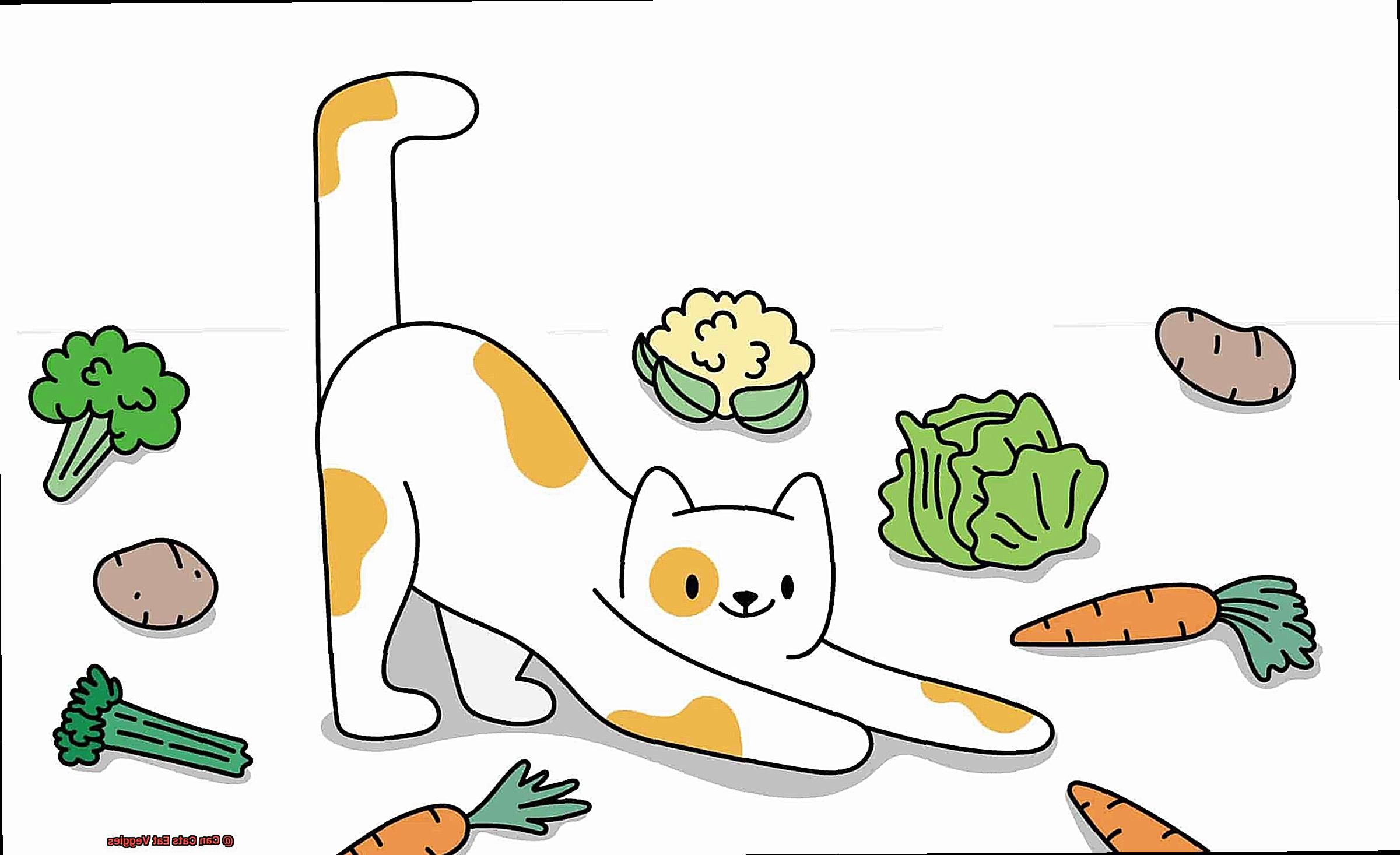
Winter squash like pumpkin can also be beneficial for cats; however, it is important to note that cats should only consume plain canned pumpkin and not the sweetened pie filling. Cucumbers and zucchini are also safe options for cats because they are low in calories but high in water content.
So, while cats should primarily consume animal protein in their diets, incorporating small amounts of certain vegetables can provide additional nutrients and health benefits.
Types of Vegetables That Should Be Avoided
When it comes to feeding cats vegetables, not all plants are created equal.

In fact, some vegetables can be harmful or even toxic to felines. As a responsible pet owner, it’s important to know which types of vegetables should be avoided in order to keep your feline friend safe and healthy.
Onions and garlic are two vegetables that should never be served to cats. These members of the Allium family contain compounds that can damage a cat’s red blood cells, leading to anemia.
Even small amounts of onion or garlic can cause serious health problems in cats, so it’s best to avoid them altogether. Tomatoes are also a vegetable that should be avoided due to the presence of solanine and tomatine in their stems and leaves.
Ingestion of these toxins can lead to gastrointestinal distress, lethargy, and weakness in cats, so it’s best not to let them get near tomatoes. Avocados are another food that should be avoided due to its high persin content, which can cause vomiting and diarrhea in felines.
Although these vegetables should be avoided at all costs, there are some other plant-based foods that are safe and nutritious for cats such as baked or steamed carrots or green beans, peas, and broccoli.
How Much Vegetable Can a Cat Consume?
Cats are obligate carnivores, meaning their bodies are designed to process and digest proteins found in meat.
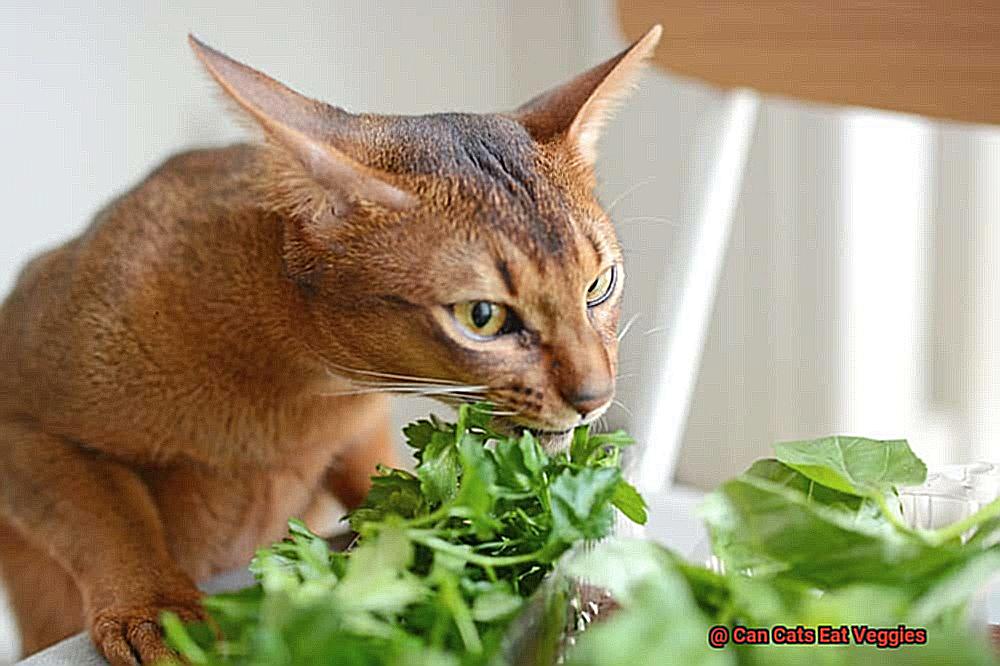
While small amounts of vegetables can be beneficial, they should only make up a very small portion of their diet – no more than 10%. Some vegetables, such as onions, garlic, and tomatoes, are even toxic to cats, so it’s important to do your research before introducing new types of vegetables into their diet.
Cooked carrots, green beans, pumpkin and spinach are all safe for cats to consume in moderation. These veggies contain essential vitamins and minerals like vitamin A and fiber that can help with digestion and overall health.
When introducing new foods into their diet it is also important to monitor your cat’s reaction – some cats may have allergies or sensitivities to certain types of vegetables so it is necessary to introduce new foods gradually and watch for any adverse effects such as digestive issues or changes in behavior.

Preparing and Serving Vegetables to Cats
If you’re wondering if it’s okay to give your beloved cat some vegetables as a treat or to add some variety to their diet, the answer is yes.
Although cats are obligate carnivores, meaning they must have a diet mainly made up of meat to satisfy their nutritional requirements, certain vegetables can be beneficial for cats. When preparing vegetables for your cat, it’s important to do so safely and with moderation.
Vegetables like onions, garlic and mushrooms should be avoided as they can be toxic for cats. Additionally, make sure that the vegetables are fresh and free from any contaminants.
When cooking the vegetables, ensure that they are cooked thoroughly so that they are easier for your cat to digest. Boiling or steaming the vegetables can help make them more digestible.
To introduce vegetables into your cat’s diet slowly and in small portions, you can mix them in with their regular food or offer them as a treat.
Tips for Introducing Veggies to Your Cat’s Diet
It’s possible to add vegetables to your feline friend’s diet, but it requires patience and persistence. Here are eight tips for introducing veggies to your cat’s diet.
Start Small
Cats can be picky eaters, so it is best to start small when adding vegetables to their diet. Begin by mixing a small amount of well-cooked and mashed veggies, such as sweet potato or carrot, into their regular cat food. This will help them become accustomed to the new taste and texture without overwhelming them.
Cook the Vegetables
Cats may find cooked vegetables more palatable than raw ones, so try cooking the veggies before giving them to your cat. Steaming or boiling vegetables for cats are usually the most effective way to prepare veggies for cats because it preserves the bulk of the nutrients and makes them easier for cats to digest.
Blend It In
If your cat isn’t interested in eating the cooked vegetables, try turning them into a paste and mixing it with their regular meal. This will make it possible for them to eat and enjoy the latest flavors without being overwhelmed by texture or smell.
Try Different Textures
Some cats may like crunchy vegetables, while others may prefer soft veggies, so it is important to experiment with different textures when adding vegetables to their diet. As a reward for playing, try offering small pieces of fresh carrot or green beans; they’ll soon associate veggies with positive experiences.
Be Patient
Cats can take some time for cats to adjust to new foods, so don’t expect immediate results when adding veggies – patience is key.
Monitor Their Reactions
Keep an eye out for any signs of digestive distress or allergies that may be related to your cat’s diet – if you find anything unusual, avoid feeding them those particular vegetables and consult with a veterinarian right away.
Provide Variety
Offer a variety of healthy veggies in order to ensure that your cat receives all of the essential vitamins and minerals from their diets, as well as making mealtimes exciting for them.
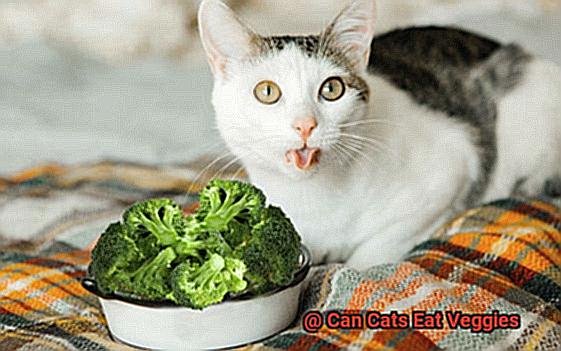
Consult With A Veterinarian
Before making any major changes in your cat’s diet, always seek advice from your veterinarian first – not all vegetables are safe for cats.
uL_TVh-2WtI” >
Potential Health Risks of Feeding Too Many Veggies To Your Cat
It’s understandable to want to share your nutritious vegetables with your cats.
After all, who can resist those cute little faces begging for a bite of your dinner? However, it’s important to be aware of the potential risks of feeding too many veggies to cats.
Cats are obligate carnivores, meaning that their bodies are designed to obtain most of their nutrition from animal protein. Although they can technically digest plant matter, they don’t have the necessary enzymes to do so properly and may suffer from digestive issues as a result.
In addition, an imbalanced diet over time can lead to serious health complications such as organ failure or poor coat health. Furthermore, some vegetables can be toxic for cats.
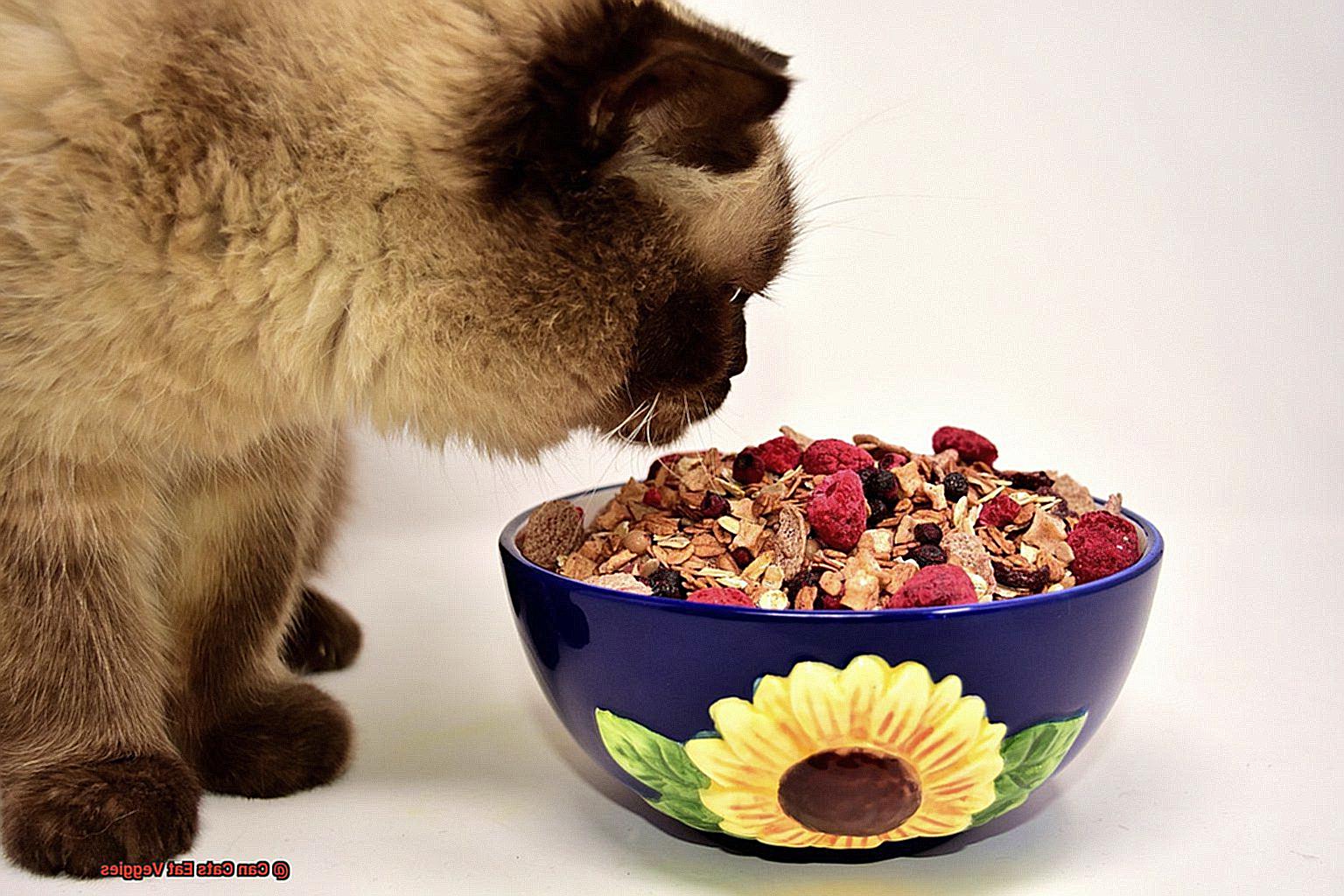
Onions, garlic, chives and avocado should all be avoided at all costs. Even vegetables that are generally safe for cats in small amounts can cause problems if consumed in large quantities.
If you would like your cat to enjoy some of the same health foods as you do, it’s best to consult with a veterinarian or animal nutrition expert first.
Also Read: Can Cats Eat Veggie Straws? – 21Cats.org
Conclusion
In summary, cats can enjoy the occasional vegetable as a treat or part of their diet.
But it’s essential to know which veggies are safe and which ones should be avoided. Cats are obligate carnivores and cannot digest plant matter correctly, so only offer cooked vegetables like carrots, green beans, and pumpkin in small amounts.
Onions, garlic, chives, and avocado must be avoided due to their potential toxicity. When introducing new foods to your cat’s diet, go slowly and watch for signs of digestive distress or allergies.
Before making any major changes in your cat’s diet, consult your vet first.







